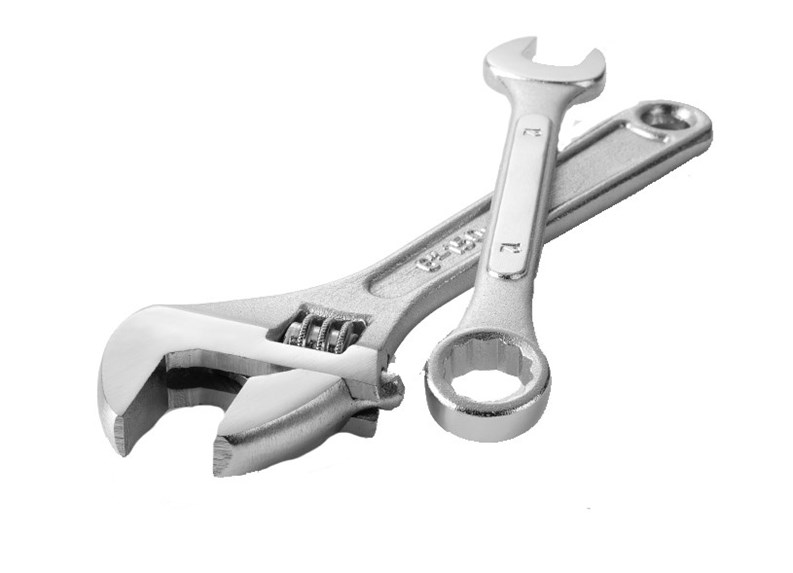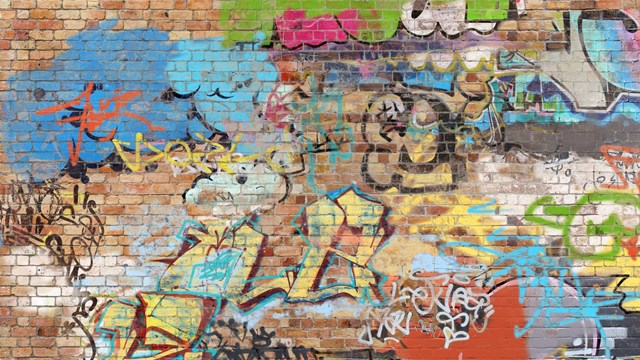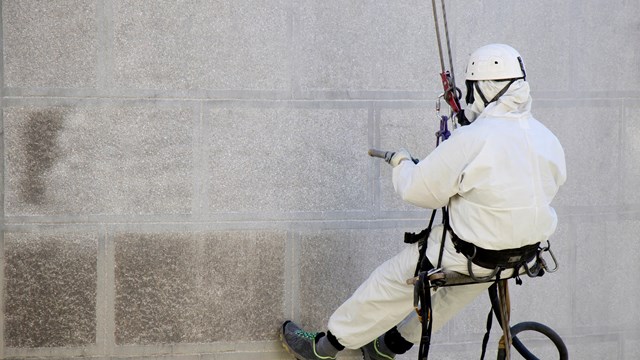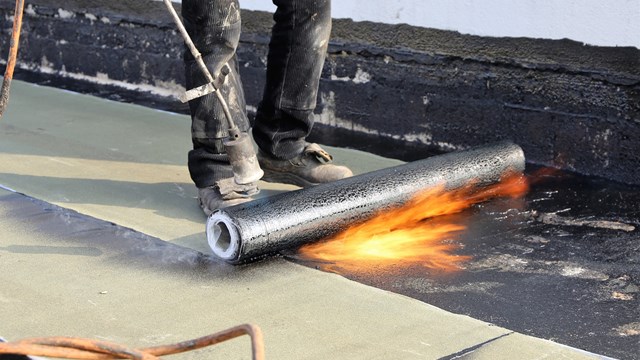New York City is a beautiful place, but let’s face facts—it gets pretty dirty. All the fumes from countless trucks and cars letting off exhaust leave a layer of grim on buildings so thick that in many cases, it’s impossible to know just how a lot of buildings were intended to look.
“The dirt’s a combination of a lot of things,” says Ed Talmo of Enviro-Northeast Sales Corp. in Highland Lakes, New Jersey. “There are airports close by, so fuel particles are coming down—but traffic is probably one of the mains issues. It all makes a general mess of things.”
Cleaning building exteriors isn’t something a lot of building managers think about, primarily because it’s expensive. But keeping the outside of your building clean not only keeps your building looking good, it may very well keep your building safer.
More to Grime than Meets the Eye
The negative impact of dirt and grime on buildings goes beyond pure aesthetics, says Talmo. The sulfur, acid and carbon that builds up takes a toll on a building’s masonry. In some instances, buildings have simply been painted in an attempt to improve their appearance—but that approach often makes the building look worse, and does nothing to improve the condition of the masonry underneath.
According to Bruce Pienkny of CitySolve, a Brooklyn-based company specializing in exterior cleaning, if you’re going to paint over grime, pollution smudges, or graffiti, “The whole key is to use a precise paint-to-surface color match. If you have a tan wall or a red wall or blue wall, you want to make sure the color paint you put on the wall is a good match. Unfortunately, a lot of the time you see a tan paint on a blue wall, or black paint on a white wall. That’s called patchwork, and it makes the building look even worse.”
Painting over graffiti and other dirt—while fine in some cases—can sometimes lead to other problems that go beyond just aesthetics.
“When all you do is paint over it, you don’t know how structurally sound that wall is behind all the paint,” Talmo says. He adds that he has taken building managers out and demonstrated the drawbacks of masking dirt by hammering steel-cut nails into the eroded bases of buildings where they’ve been painted.
“It’s like driving the nail into plywood,” Talmo says. “And they’ll look at me, and say ‘What are we supposed to do?’ They have to strip the paint and make the necessary repairs before a structural problem develops that is going to hurt someone.”
Talmo suggests having a building cleaned every three to five years in order to ensure that the building will remain safe while looking its best.
“I don’t think a whole lot of damage is going to start occurring for a while, probably after five years,” Talmo says. “But for the sake of the aesthetics of these beautiful buildings, they should have it done.”
Jerry Blumberg of Kew Forest Maintenance Supply in Queens, however, says that buildings rarely undergo a complete cleaning, largely because of the cost.
“First of all, if you’re going to get up high in a building to clean it, you have to cover the entire building,” Blumberg says. “It has to be wrapped so that you don’t get debris and cleaning materials all over people—that’s why buildings aren’t [cleaned] more often. You might do the first, second third floor, but you very rarely see these buildings fully cleaned. Years ago, they were sandblasted—which was terrific, but the city outlawed sandblasting.”
Getting Rid of Graffitti
Some may call it art, but most people aren’t fond of graffiti when it shows up in the neighborhood. In fact, the city recently passed a law ordering commercial property owners and owners of apartment buildings with at least six units to clean graffiti from their buildings immediately after it’s discovered or face fines of up to $300. Building owners do have the option of calling 311 and having the city clean it.
Talmo says graffiti removal can be made easier by applying a “breathable” overcoat to the building. These products don’t prevent graffiti from going on a building, of course, but they make removing it easier. Breathable coatings allow for normal moisture transfer and expansion and contraction. According to Talmo, silicone-based anti-graffiti sealants work well.
“There are several good protective coatings,” agrees Pienkny. “If you power wash a brick building, and you don’t want to constantly re-power wash it, you can put on an anti-graffiti coating that acts like a barrier between the graffiti and the substrate. Now, the graffiti is sticking to the coating, not the wall. Then you can just hose it off with cold water.”
According to Pienkny, “There are two types of anti-graffiti coatings—non-sacrificial and sacrificial. The sacrificial will come off every time you power wash the building. Non-sacrificial is a stronger base—you can clean it 10 or 20 times before you have to re-apply. So we would recommend non-sacrificial, unless you’re dealing with a landmark or historic building, because you can’t use a non-sacrificial on a landmark building in New York City.”
“You want to stay away from anything that has polymers in it,” Talmo says. “There are too many polyurethane-based products. In so many cases, someone might say it’s a water-based product, so therefore it’s going to be breathable—but that’s not necessarily true. If it’s a polymer, it’s not going to be breathable. And non-breathable products do more damage than the graffiti itself.”
“With the breathable coatings, the graffiti goes on, but the coating doesn’t allow the paint to get into the pores of the brick or stone,” Talmo says. “It just more or less sits on the surface, and the maintenance person can apply another product that will break the bond between the graffiti paint and the silicone coating.”
Removing graffiti takes more than products though; the people running the building need to be motivated to have it removed.
“It’s almost sad, because I feel as though a lot of people don’t see it anymore,” Talmo says of graffiti. “Nobody’s making complaints. It’s all over the place—you go through areas of Brooklyn and Queens, and buildings are just totally covered in graffiti. You say to people, ‘Aren’t you offended by the graffiti?’ And they go, ‘What graffiti?’ In a lot of cases, you have absentee owners, and the tenants couldn’t care less.”
Using the Right Products and Procedures
There are a variety of products and methods professionals may use to clean your building, and choosing the right one is just as important as making the actual decision to clean the exterior in the first place.
“The majority of clients are going to power wash,” says Pienkny. “Over time, the brick becomes discolored, so the act of power washing with hot water also cleans the brick and gives it a nice wash-down, so the brick or cement will be cleaner.”
However, says Pienkny, there’s more to cleaning a building than just hosing it down with water. “A lot of times, you’ll see people remove graffiti with really high-volume power wash systems [that spray] 3,000 pounds per square-inch (psi), or four gallons a minute. But what we have learned is that the key to removing graffiti and other dirt—especially from brick and porous surfaces—is that you have to let the chemical do the work, not the power washer.”
For the tough job of removing vandals’ spray paint, Pienkny says he uses a product called Rock Miracle Graffiti Remover, which is actually two products—one with a black label that’s specifically for graffiti, and one with a red label, which is a paint stripper. Pienkny says that if he’s trying to get five layers of paint off, he uses the red label, but if it’s a single layer of spray-painted graffiti, he applies the black label, which is like a paste. He applies it with a roller, lets it sit for 15 minutes to half an hour, and the graffiti paint begins to break down.
“After that, you power wash everything off with a very hot water machine,” says Pienkny, who uses a power washer spraying 220-degree water. “You don’t need four gallons a minute, and you don’t need 3,000 psi of pressure, because that ultimately will damage the mortar joints. The concept is to let the chemical do the work,” he says. “The key is not high water volume or pressure, it’s high water temperature. That’s the key—high water temperature with a really good chemical.”
For protecting concrete masonry, Talmo says the best options are what’s known as “room-temperature-vulcanizing,” or RTV silicones. These products produce a smooth, almost frictionless barrier against grime, paint, and other undesirable materials. The dirt can’t stick to the treated surface and literally slides right off with the application of a little warm water.
One option Talmo doesn’t generally recommend in New York are the “sacrificial” products mentioned above. Sacrificial coatings are water-based wax products that are sprayed onto building surfaces. If graffiti is spray-painted onto the surface, a hot, high-pressure washer can be used to remove the coating—and the graffiti with it. The problem with using waxy substances is that if the coating is removed during the winter months, it can’t be reapplied until the weather warms up, so if graffiti is put on the surface during that period, the building won’t be protected.
“Sacrificial coatings are effective in getting [graffiti and grime] off, but you can’t reapply them when it’s below freezing,” Talmo says. “You need a temperature closer to 45 to apply these products. So whoever did the graffiti will see that it’s been removed, and more than likely will come back and put that tag right on the same spot. That’s what history and experience tells us.”
Cleaning products have changed over the years as well. Today’s cleaners are more environmentally safe than those of the past.
“You need something decent to cut through the grease and grime,” Blumberg says. “A couple of newer products are things like peroxide and delimonene (a citrus-based solvent)—which they use for everything today because it’s environmentally friendly. But once you get into environmentally safe products, the price almost automatically goes up 40 percent, only because of the registration process the product has to go through to get that ‘green’ label.”
Know Your Building’s History
If your building is historic or a designated landmark, you may be limited in regards to what you can do with your exterior. According to the New York State Historic Preservation Office (HPO)’s website, cleaning of masonry on historic exteriors isn’t recommended because it “has the potential to cause damage.” The office recommends that cleaning should only be done when architectural features are obscured, or if the dirt has the potential to cause damage to the masonry underneath.
If an historic building does require a cleaning, the office says that acidic cleaners or ones high in alkaline shouldn’t be used. Instead, the HPO recommends that cleaning professionals use non-acidic neutral pH detergents with non-metallic brushes and scrapers and limit the water pressure they apply to 150 to 200 pounds per square-inch. If your historic building is painted and the paint is part of the historic look, the paint should be left on the building. If the historic design or appearance was painted over at some point, the paint should be removed gently, with work done on test areas before choosing which method will be used to remove the paint.
The Benefits of Clean
Keeping your building as clean as possible has multiple benefits. “It makes a positive first impression to prospective tenants, and it creates a lot of goodwill with current tenants,” says Pienkny. “When people look at a building, if the exterior is covered with grime and graffiti, they’re going to have a negative first impression of what the interior is going to look like. The landlord or manager who’s meticulous about maintaining the exterior is meticulous about the inside, and vice-versa.”
Cost—which varies widely, depending on the size and material of the building and the methods and cleaning products used—is definitely a factor in why so many buildings go very long stretches without getting cleaned. Talmo says a regular cleaning schedule is necessary, but that many buildings put it aside because of the cost. He recommends scheduling building cleanings when window cleanings are scheduled, because scaffolding will already be up, saving a few dollars.
According to Talmo, you can also keep the lower levels of your building clean with a simple power washer. “As far as regular dirt and grime, today power washers are so inexpensive, for somebody to take a hose outside, clean the side of the building as far as they can reach and clean the sidewalk, it would make New York a little nicer.”
Anthony Stoeckert is a freelance writer and a frequent contributor to The Cooperator.







Comments
Leave a Comment